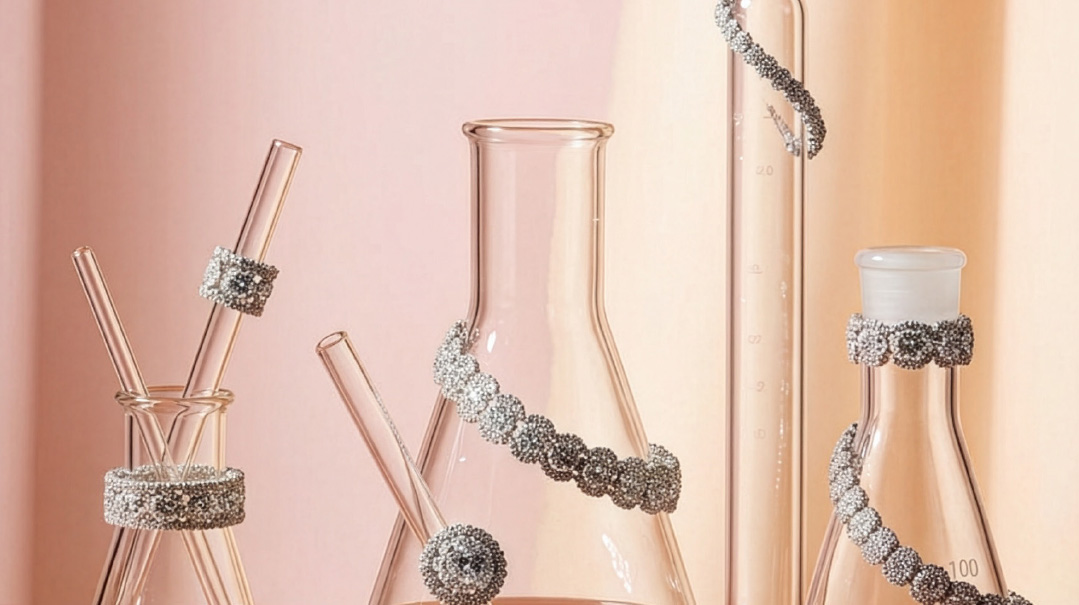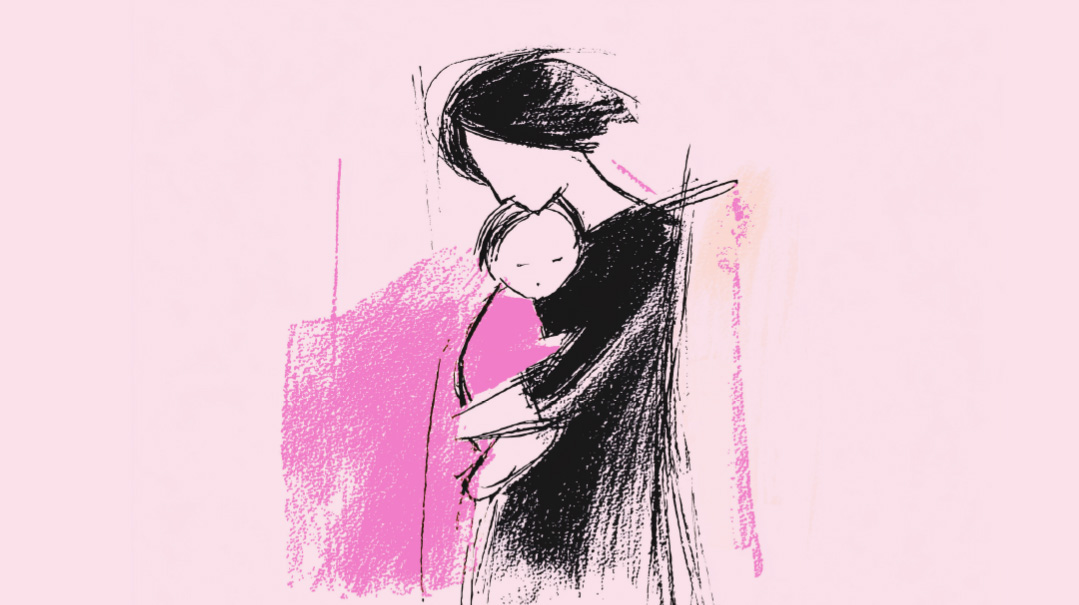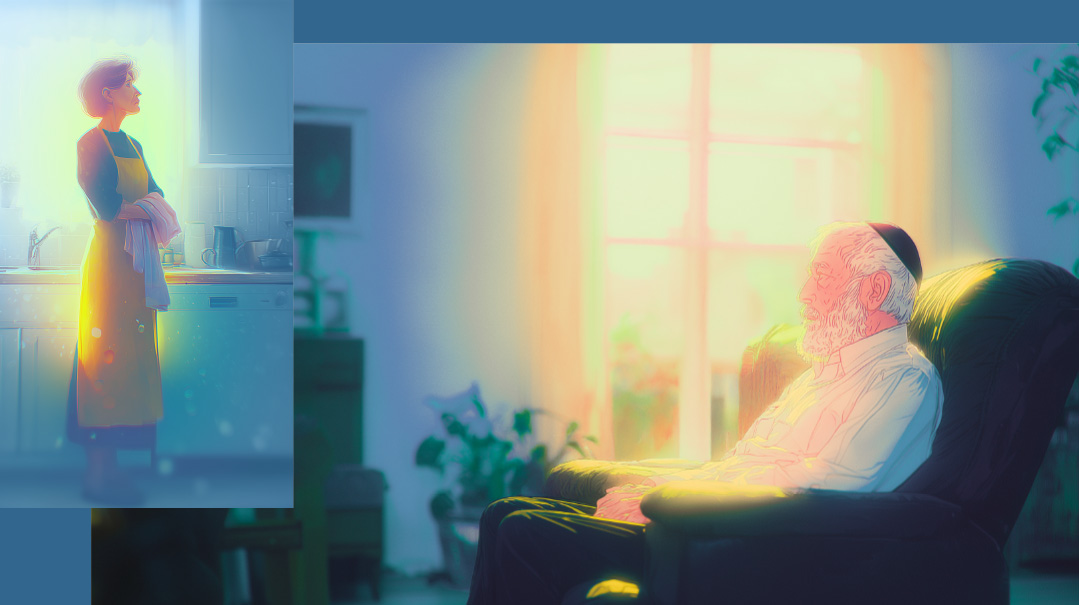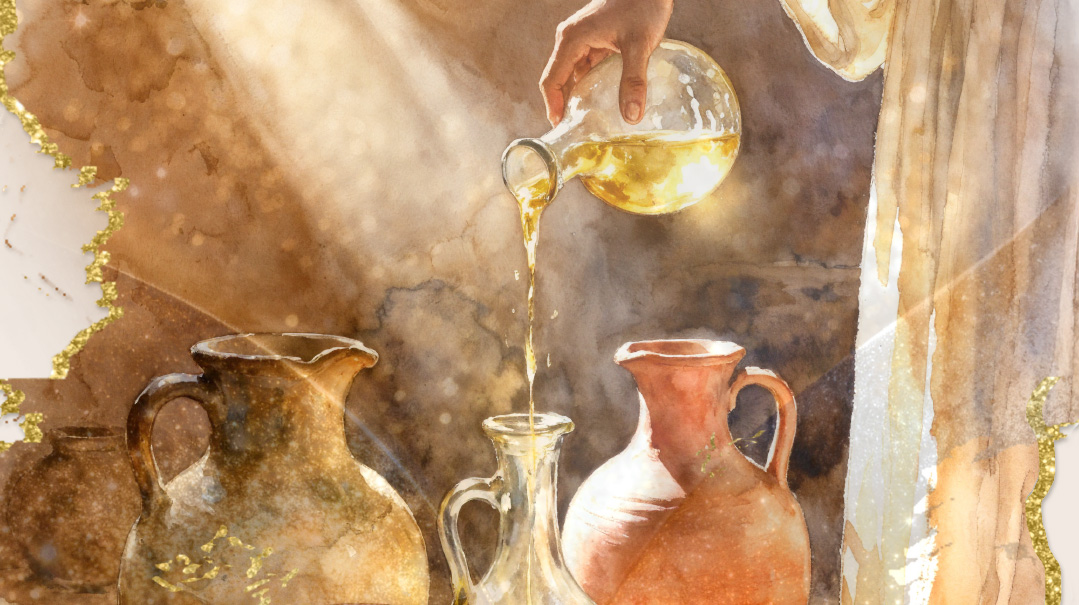When Mommy Has Cancer
| April 25, 2023I didn’t need anyone to break the news to me. There was no crushing shock. I knew it already
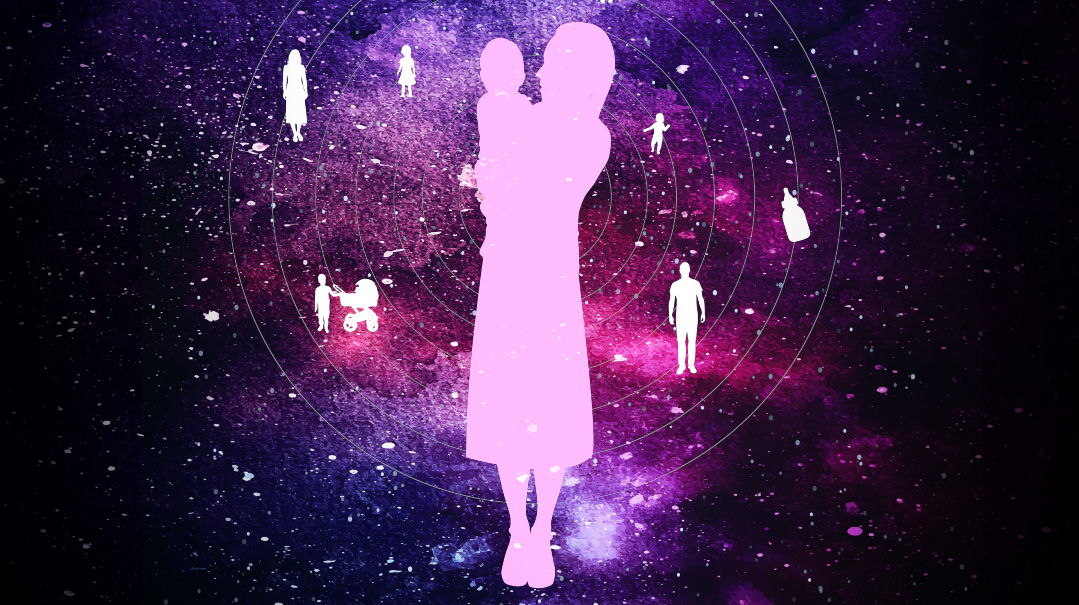
As told to Shterna Lazaroff
I
was never sick. No one in my family was. If we had the sniffles, we grabbed a box of tissues and headed to school. Fever? We would sleep it off and get right back to work in the morning. My parents didn’t have a thermometer or any over-the-counter medications.
When I was 18, I had oral surgery to remove my wisdom teeth. The next morning, I went to the bathroom and fainted from the pain. When I fell, I slammed my head on the tiled bathroom floor. I woke up and got up to continue brushing my teeth. It didn’t even occur to me to take pain medications.
During my pregnancies, when the doctor would ask if I experienced certain symptoms, I never knew what to answer. I never paid attention to my body. In fact, I was proud of myself for powering past it. I would get out of bed the day after deliveries and never took naps — even if I had a fever. I was a mother with children who relied on me to be there, so I was glad to know nothing could knock me over. If I ever felt unwell, I ignored the aches and I’d eventually feel better. The philosophy worked for me because I did always recover — and it reinforced the idea that if I ignored everything, it would turn out fine.
Cancer proved me wrong.
My first cancer memory is sitting next to my husband at the Pesach Seder. Our kids were scattered around the table, too, sitting among their cousins. The baby, our newest addition, was sleeping in the stroller near me. I watched the soft rise and fall of her chest, her gentle sleep, and then told my husband, “I feel a lump.”
It had been there for a while, but first I ignored it, then my doctor said, “It’s a clogged milk duct.” Because I was nursing, it made sense to write the lump off as a common side effect.
I had tried all the clogged-milk-duct things, though. Heating pads. Massaging the area. Epsom salt. The lump wasn’t going anywhere, so I finally decided to mention it to my husband.
On Chol Hamoed, I called my obstetrician again. “We don’t even do GYN,” the office said. That’s why, in all my years of regular visits, no one had ever done a standard exam to check for any lumps.
The office referred me to the Chemed health center, and I scheduled an appointment. The sweet PA felt around for a bit.
“Is it a lump?” I asked.
“It’s actually two,” she said. Immediately after the appointment, Bikur Cholim scheduled me for testing at the local imaging center. I remember walking down the hill to their building and thinking, When you walk back up, you might be a different person.
I wasn’t shocked when I got there and they kept repositioning me to take more photos. I didn’t even blink twice when they became tight-lipped and said they were calling in other medical staff for “a quick peek at the scans.”
I didn’t need anyone to break the news to me. There was no crushing shock. I knew it already.
Breast cancer.
My tumors — plural — were large and the tissues surrounding them showed concerning calcifications. I didn’t understand what that meant, but it was bad. A biopsy confirmed that my lymph nodes were affected, too, which meant the cancer was already in my blood.
When the doctor called with the results of my testing, it was during the early morning rush to school. My toddler didn’t like the cereal choices and my son had just missed the bus.
I escaped it all to answer the call in the bathroom. I sat on the toilet with a pen and paper, asking the doctor to repeat himself — “What kind of cancer did you say I had?” Meanwhile, my daughter was banging on the other side of the door to ask if I knew where her shoes were.
At that moment, I knew I’d entered this new sphere where I’d have to straddle two worlds. I was a cancer patient and a mother. I was sick and was going to be there for my kids. I was at risk of death and also praying to stay alive.
My first thought after the diagnosis was, I got this. A little chemo? Some radiation? I could handle that. The challenge was that it kept getting worse. I’d come back from a grueling chemo treatment, the end nearly in sight, and then find out I had an infection. I’d recover from that one and then find out I needed another round of chemo.
It’s one thing to stand strong. It’s another to get back up after you’re knocked down. It’s an entirely different story to hold on when you get knocked down again, then again, and again, and again.
I could tell you about hair loss and painful chemo and horrifying radiation and learning that you may never have another kid, but you’ve read about all those a million times before. And that’s my point — my story isn’t so different from anyone else’s.
The numbers are staggering. There are dozens of women in my city going through the same thing I went through.
They drive to a six-hour appointment, then walk into a houseful of little kids who want their help to finish their arts and crafts.
Their oldest kids ask why they’re acting strange, then they sit down on the couch and explain they have cancer. When the little ones ask, they promise they won’t die, then deal with the therapists who are mad they made a promise they might not be able to keep.
They spend nights tossing and turning as they decide who to tell. And then find out that — even though they wanted to keep it secret — an organization put their kids on the list for Chanukah presents. Their classmates are the ones who volunteered to pack it and now want to know what’s going on.
They cry the first time their hair falls onto the shower floor and then rush to take one last picture before it’s all gone. They cover the mirrors in their bathroom with that photo to remind them who the real them is — and that they’re still beautiful. They escape the reality that they’re hairless, and do their best to protect their kids, too. They make sure their tichel never slips enough for them to see the baldness and wear a wig for hours every day. They wear their wigs and makeup around their mothers, too, because even though their mothers know they’re sick, it’s too hard for them to see their daughters so sickly.
They need to be strong for everyone else.
They smile at family simchahs and then go home and collapse in the bedroom because it’s so, so hard to be happy around everyone else. But they need to be that because if people see them sad, they’ll collapse, too. And if they stay strong, everyone will be able to breathe out a little and say, “Everything’s okay.”
Even when it’s not.
They find out that their cancer is stage four and start making plans for their kids’ future. Who can they ask to take care of shidduchim? Which relative will be able to have them for Shabbos meals? Which friends can they ask to take them shopping before camp or seminary? Should they have a photo shoot in wedding dresses so the girls will have pictures with them even if they miss their wedding?
Dozens of women like me spend hours on the phone with every organization, askan, and askan’s brother-in-law asking for advice. For me, that was one of the hardest parts of having cancer. This surgery or that one? This doctor or the other one? My husband and I had to make decisions navigating something we knew nothing about. Organizations would refer a specific doctor, but we’d ask more pointed questions and realize it was simply the doctor they knew best. We’d find out about a certain must-do treatment and then only hear about the devastating side effects when we did our own research.
And I wondered — if early-stage cancer is curable and late-stage cancer is terminal, why aren’t we doing more to catch cancer early on?
I remember reading an article about a cancer patient who received her diagnosis and said she wasn’t thinking, “Why me?” She was wondering, “Why not me?”
Because, unfortunately, this can happen to anyone. When I went for that first mammogram, I had to fill out a questionnaire. Family history of cancer? No. Over 40? No. Other health concerns? No.
You can have zero family history, no BRCA gene, be this young, and still have breast cancer.
There are more than 80 women on my chat for breast cancer patients. And that’s only the women who are under 45. Four women left the group this year — because they passed away.
It’s not always as simple as getting regular checkups, but regular checkups help. If you go to the doctor and no one checks you for lumps, ask them to. Make a point to do it yourself every month so you notice when things change. If they do, schedule a doctor’s appointment right away. If insurance won’t pay, get the appointment anyway. If people brush off your concerns because you’re nursing, take yourself seriously. Find out your family history, and if you know you’re at risk, be even more proactive.
When I later asked my obstetrician why they don’t do breast exams, they said that the American Association of Obstetrics took it out of the exam protocol because there were too many false alarms. Too many women became needlessly anxious.
I’ve seen the other side, though. Friends like me who pushed off exams because they were young and nursing. Now they’re filming videos so their kids will remember them if they die.
Is it worth skipping the anxiety if we can save lives? Don’t panic, but get tested on a regular basis. Know your body and advocate for your care.
Baruch Hashem, today I’m alive, healthy, and here to share my story. My hair has started to grow back, my kids aren’t frightened anymore, and although I’ll be on medications for a few years, my heavy treatment is done. I survived breast cancer, and I thank Hashem for that every day. I also ask Him to keep an eye out for the rest of you, young moms with families to raise and a life to live. Because you could be just like me.
Please make sure you never are.
Dr. Rebecca Alis is a board-certified radiologist who specializes in breast imaging. She has fellowship-level training and expertise in mammography, breast ultrasound, breast MRI, and all modes of breast biopsies.
What causes breast cancer?
It’s a multifactorial cause. We can’t say that it’s only environmental, genetic, or aging. It can be caused by any of those things. Some specific cancers are associated with genetic mutations. Some are associated with the way the breast tissue ages.
At what age is someone considered at risk?
One in nine women will develop breast cancer during their lifetime. But survivability is directly related to the stage of diagnosis. At stage one, there’s a more than 95 percent chance of survival.
For a woman of average risk, which means they have no family history or other risk factors, the current recommendation is to get tested with a mammography once a year starting at age 40.
If someone is at high risk, we recommend that screenings start earlier, ten years before your earliest-diagnosed relative.
Is the risk of breast cancer higher in the Jewish community?
Yes. The risk level of carrying the genetic mutations associated with breast cancer is higher in the Ashkenazi Jewish population — more than four times the rate of the average woman. For women with the genetic mutations there are high risk screening guidelines which are followed.
In this narrative, the young mother thought her lump was a clogged milk duct. Are there any warning signs a woman should never ignore?
If you have a palpable mass, you should be evaluated by your primary health care provider, and will likely need imaging. If you think it might be a milk duct, it is reasonable to attempt to relieve the symptoms and see if the finding resolves within a month.
In the event of a persistent palpable mass, even during nursing or pregnancy, the indication is to perform breast imaging to exclude breast cancer. Everyone should also inform their clinician if they note skin dimpling, skin thickening, or nipple changes. These signs should not be ignored. Get screened.
What’s the line between being proactive about warning signs but not becoming unnecessarily anxious?
Each person is her best health care advocate. If you are concerned or unsure, discuss the findings with your clinician. It might seem scary to get screened, but remember that early detection is key and increases the survival rate in breast cancer patients.
(Originally featured in Family First, Issue 840)
Oops! We could not locate your form.


